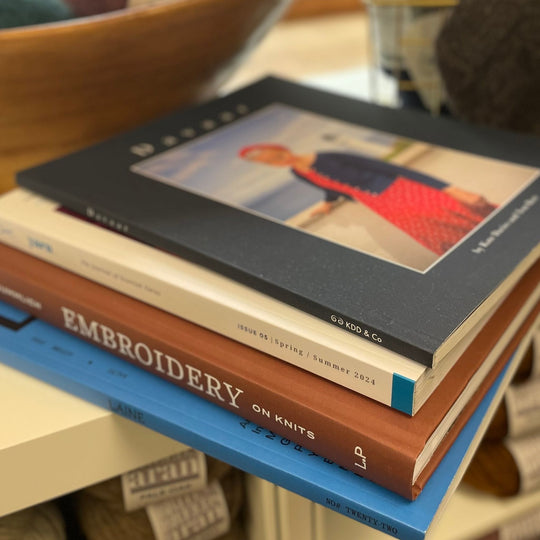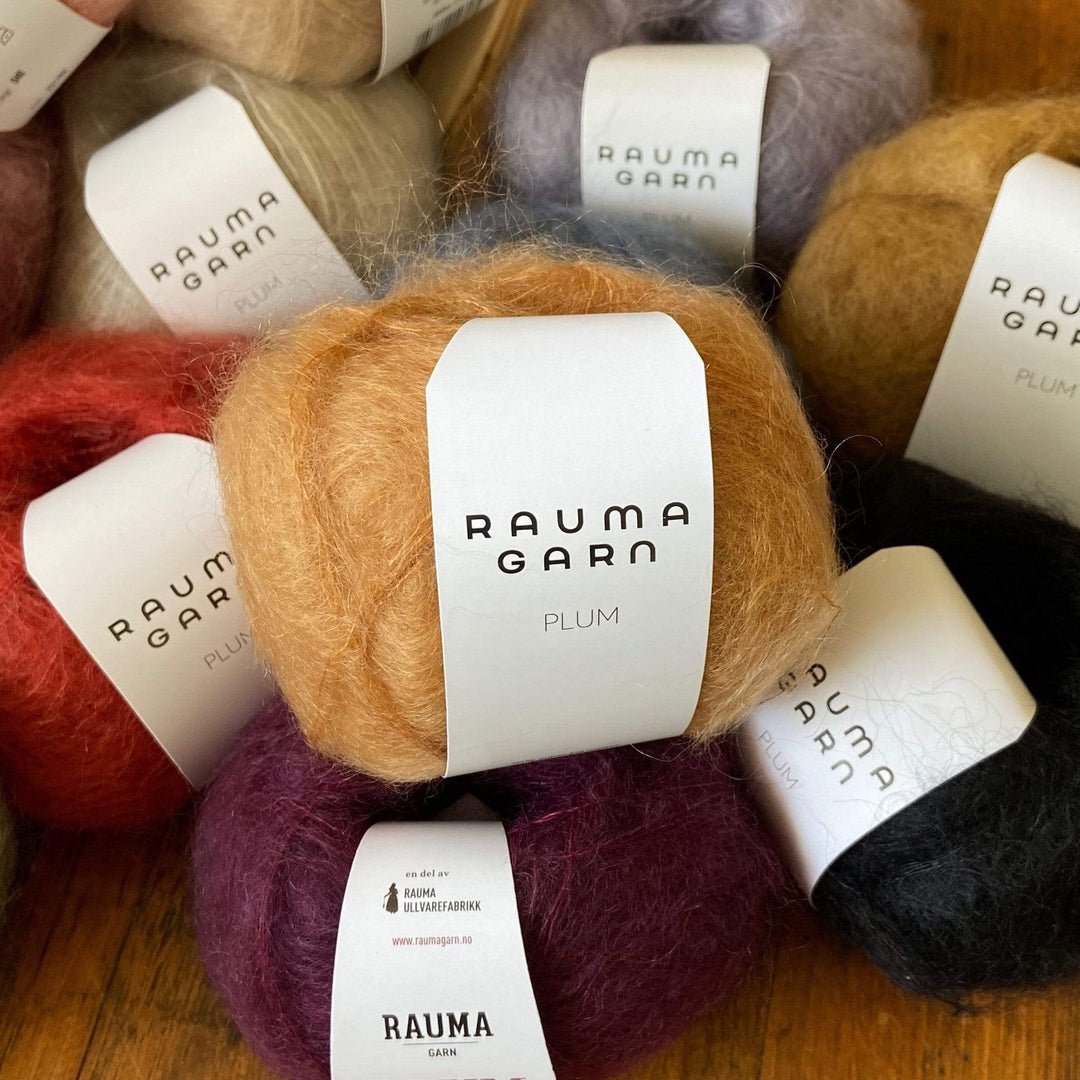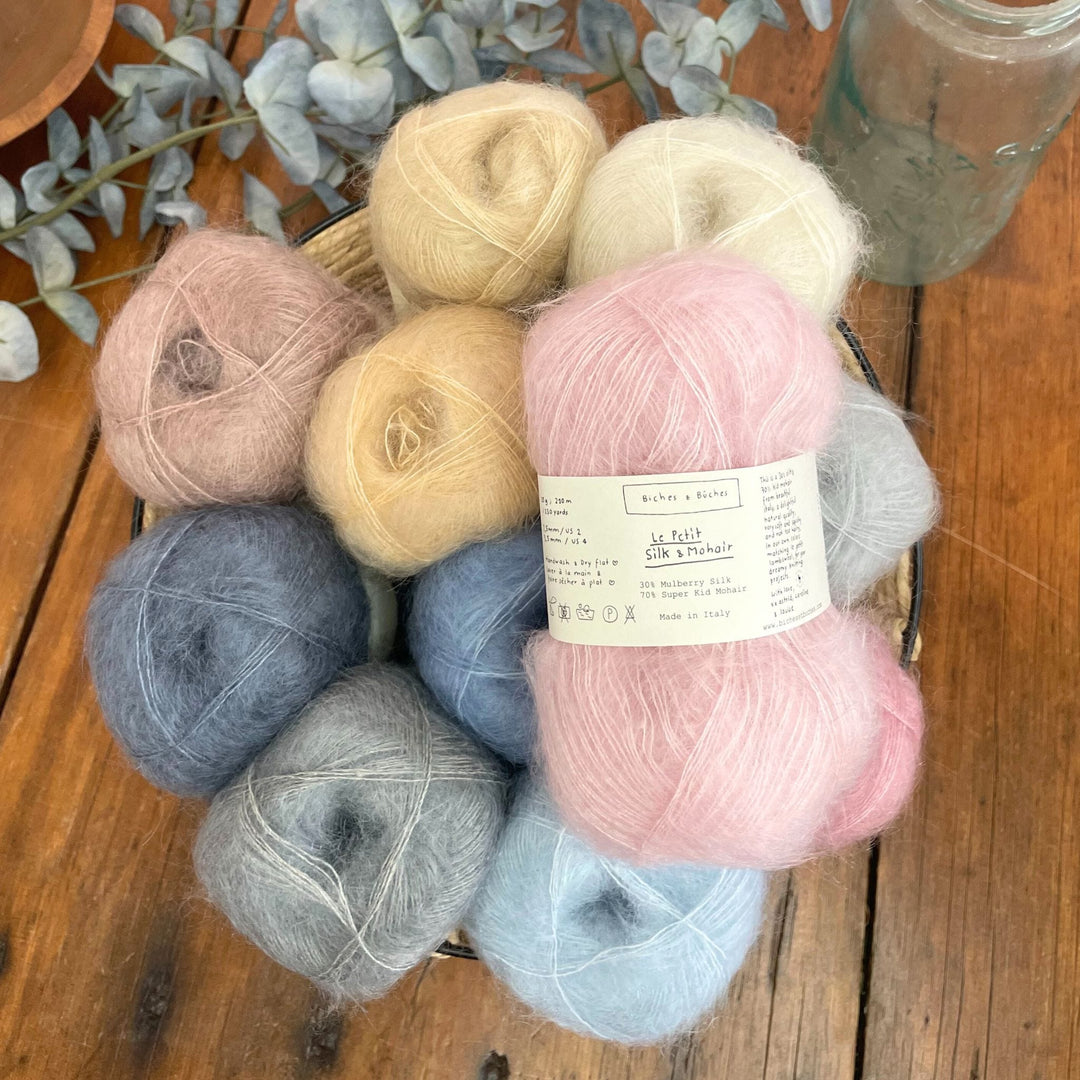
Knitting with Mohair: All your questions answered!

Topic Favourite
Rauma Plum (Mohair) Yarn
Mohair has become extremely popular in the last few years in the handknitting world. After its heyday in the 1980s, it fell out of favor for a few decades, but it is decidedly back and more versatile than it ever was. But, it raises a few questions: (1) what is it?, (2) how do I use it?, and (3) how can it change my knitting?
What is Mohair?
Mohair is the hair of the Angora Goat (not related to the Angora Rabbit, which produces Angora fiber). Recently, it has appeared in handknitting as a laceweight yarn with 60 to 90% mohair fiber and the remainder a filament like silk or nylon. It is a fluffy, wispy fiber held together around a solid core that makes it knittable.
How do I use Mohair?
Laceweight mohair can be used either on its own or held double with another yarn. On its own, it is usually knit at a large gauge and creates a ethereal, light, web-like fabric. Held with another yarn, it adds a little bit of thickness but also adds softness and fluff to the finished fabric. It can also be used in some parts of a fabric in stripes or colorwork to change the texture.
How can Mohair change my knitting?
Mohair adds softness and gauziness to a finished fabric, which also can fill in the little gaps between stitches in a yarn with little halo. It can also change the texture, making a fabric more fluffy and usually warmer as well.
Mohair can also be used to get a cool marled effect in your fabric. Instead of pairing your underlying yarn with a coordinating mohair, choosing a contrasting color will add even more visual interest and variation to the fabric. The effect is similar to an extreme heathering effect or a barberpole twist.
Can I see an example of knitting with Mohair?
I knit three swatches using Rauma Finullgarn as my base yarn and pairing it with Rauma Plum Mohair. I was aiming to recreate the drapey fabric of the Vanilla Sweater, so I tried three gauges starting with 20 stitches per 4 inches. I knit black Finullgarn with hot pink Plum on a US 7 (4.5mm), and I got a gauge of 20 stitches to 4 inches.

Then I knit magenta Finullgarn with hot pink Plum on a US 8 (5mm) and got 19 stitches to 4 inches.
Finally, I knit the black and pink combo again on a US 9 (5.5mm) and got 17.5 stitches to 4 inches. These are all numbers on my blocked swatches – the pre-blocked swatches were about a half-stitch tighter in all swatches.

Any tips and tricks?
Mohair tends to stick to itself more than wool does, but its completely manageable! First, knitting with two strands is actually very simple – you pull from both balls and knit as if they are one strand. I would recommend using a yarn bowl or small tote bag to allow the mohair to roll without rolling away and knit from your base yarn as you would normally. Second, when you knit with a strand of mohair held with a wool or another base yarn, always knit from the outside of the mohair ball. Mohair’s stickiness can make a center-pull ball a disastrous tangle! Third, the stickiness makes tinking or frogging your knitting a bit more difficult than with wool alone, but it does usually come apart if you need, especially when held double with another yarn.
When you’re planning your projects with mohair, a good rule of thumb is that a strand of mohair adds about a weight category to your base yarn. For example, a fingering yarn will become an approximate sport weight, or a DK yarn will become an approximate worsted weight yarn. As always, swatching is critical, but this is a good guide especially if you’re adding mohair to a pattern that doesn’t use mohair. Also, you’ll need the same yardage of your base yarn as your mohair, but because the mohair is so lightweight, you generally get a lot more yardage in a ball and will likely need to order fewer balls so comparing the yardages is super important.
A Final Word
All in all, I think knitting with mohair is doable and totally worth it when you’re looking for texture, fluffiness, or color interest in your project. I loved how both the coordinating colors and the contrasting colors came out in my swatches. Plus the mohair fluffs up a bit more with blocking, so all fabrics were fluffy and soft. If Finullgarn on its own is a little too woolly for you, try adding mohair! It changes the fabric feel completely, but keeps the strength and structure of the underlying wool for a robust sweater.
We currently offer two brands of Mohair that we carry in the shop, Rauma Plum and Bîches & Buches Le Petit Mohair & Silk.
9 comments
Back to The Woolly Thistle




































Hi, recently purchased Vanilla Fluff pattern. Requires short & long circular needles. Would you please advise what length in cms for each needle as there is a lot of choice in needle lengths. First time using this type. Thank you 😊
For a number of years I knitted with ‘Amalfi Mohair’ sadly I cant get it now.
I have a lovely jumper pattern that i knitted with Amalfi Mohair. needles being 4mm and 5.1/2. Is it possible to use an equivalent
I would be so grateful for suggestions. UK
How do I get the majority of the fluffiness on the outside of a sweater?
Wondering how well mohair wears when knitted with wool and/or by itself?
Leave a comment